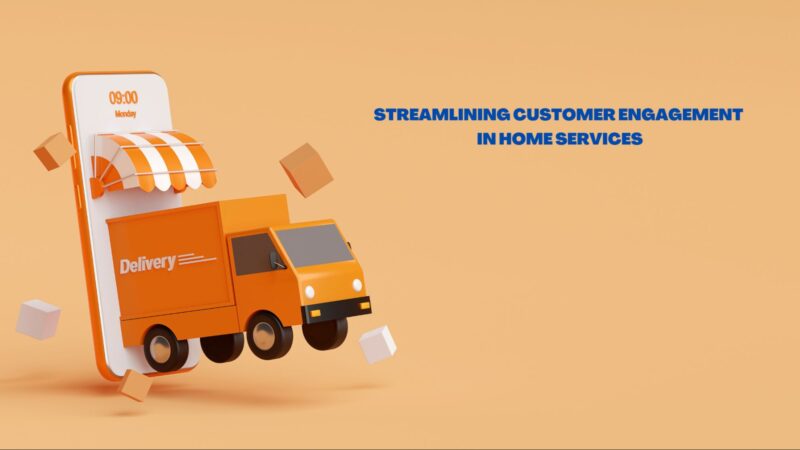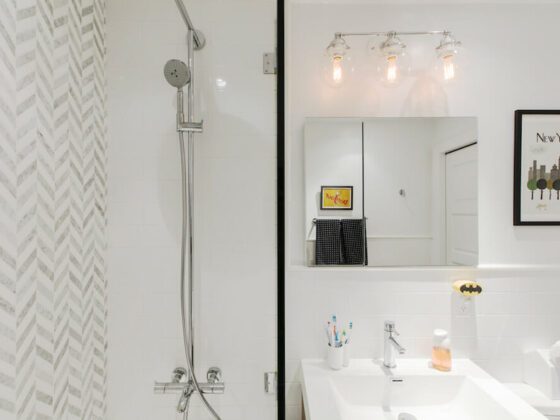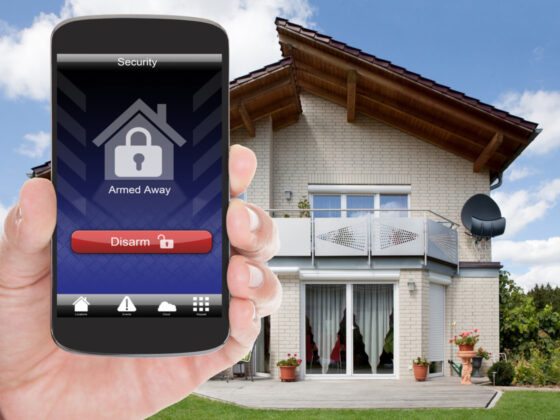Currently, people utilize various home services to maintain their homes efficiently and simplify their lives. Services ranging from cleaning and yard work to plumbing, electrical work, and pest control all fall under the category of home services.
With everyone’s busy schedules and getting older, the demand for hiring help around the house keeps growing. In 2021 alone, Americans spent over $500 billion on home services. However, with the industry’s rapid growth, companies must enhance their customer experience to remain competitive.
The Scope of Home Services
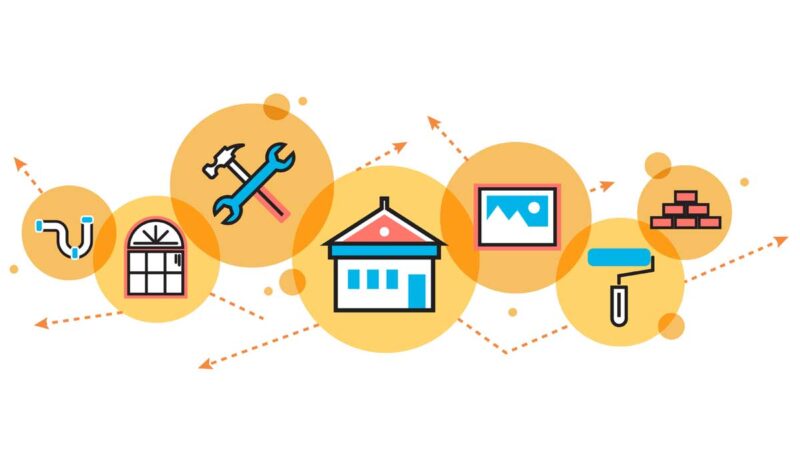
Keeping customers happy and engaged is so important for home service companies to stay competitive. With lots of options out there, consumers will pick the providers that offer the best experience from start to finish. Building loyalty through personalized interactions throughout the customer journey is key.
Numerous home services are essential for property maintenance, improvements, and ensuring comfort and safety. Since we’re all spending more time at home, demand for conveniences and upgrades has increased. The integration of affordable call center services into the customer engagement process proves instrumental in elevating the service delivery within the competitive landscape of home services. Key categories include:
- Cleaning services, such as maid service, carpet cleaning, and window washing, offer professional deep cleaning that is challenging for homeowners to perform independently.
- Handymen to help with basic installations, furniture assembly, hanging decor, light fixtures, and grills handling all those little fixes.
- Plumbers deal with leaks, clogs, and water pressure, they have the expertise for plumbing systems.
- Electricians for lighting, outlets, and wiring upgrades, electricity is so essential, pros are a must.
- Remodeling kitchens, bathrooms, and additions are big ways to completely transform living spaces.
- Landscapers for lawn care, patios, pools, and maintaining beautiful outdoor spaces.
- HVAC installation and repair, comfort, and efficiency are more vital than ever.
Today’s home services go way beyond chores to help people get the most out of their properties. Keeping customers engaged with great service is how providers stand out in meeting all these home needs.
Why Home Services Providers Need to Create Customer Engagement
In the fiercely competitive home services sector, cultivating engaging customer experiences is imperative for providers’ success and growth. There are several compelling reasons home services firms must make customer engagement a priority:
- Engaged customers are much more likely to be repeat purchasers and refer others, fueling growth.
- Top-rated service with a reputation for excellent customer care wins market share.
- Engaged customers tend to use more services and remain clients for longer.
- Engaged customers are less inclined to switch providers over minor cost differences, as they prioritize value.
- Consistently positive interactions foster an emotional connection with the brand.
- Customer feedback helps identify areas for improvement.
- Satisfied customers organically promote the brand to others.
- Engaged customers create a positive work environment.
In the home services space where switching costs are low, creating real customer engagement through personalized, premium experiences is essential to be the provider consumers trust and recommend. This level of engagement must be an organization-wide priority, not just the domain of marketing or customer service departments.
Consequently, home services firms must invest in engagement-enabling technologies, hire for customer-centric skills, train for empathetic service delivery, and reward employee efforts that drive engagement. The firms that master engagement will gain customer loyalty to outperform competitors.
The Role of Technology in Streamlining Customer Engagement
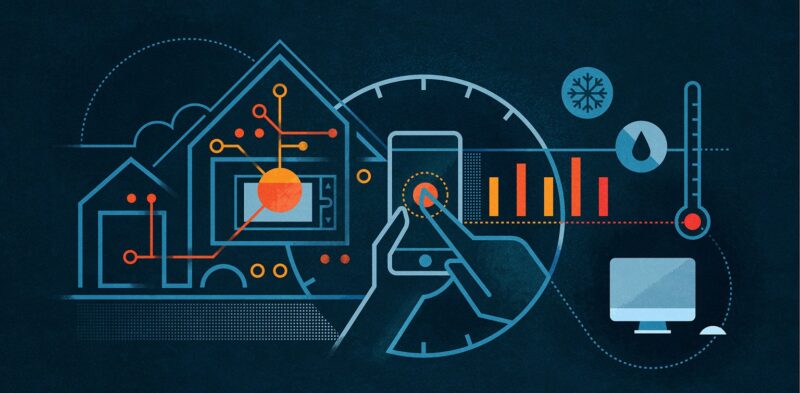
Utilizing technology is crucial for home service businesses aiming to streamline and enhance customer engagement. Key technologies and their benefits include:
- CRM Software: CRM software consolidates all interactions and data in one place, offering a comprehensive client view that enhances personalization.
- Online Booking: Allowing online scheduling and booking around the clock drastically improves customer convenience and accessibility.
- Mobile Apps: Companies can offer on-demand services, real-time notifications, and mobile payments for faster, streamlined service.
- Chatbots: AI-powered chatbots provide 24/7 customer service, answering common questions to improve response times.
- IoT Connected Devices: Monitoring internet-enabled equipment remotely allows for preventative maintenance and rapid issue resolution.
- Payment Processing: Secure mobile and online payment systems speed up transactions and reduce administrative work.
- Reviews and Rating Platforms: Monitoring customer feedback on third-party sites provides insights to address concerns and improve processes.
- Social Media: Engaging with customers on social media facilitates better relationships and brand-building.
- Digital Forms and Agreements: Paperless forms reduce clutter, lower costs, and enable faster processing.
Customers now expect rapid, convenient, and tailored service from home service providers. With technology making everything more streamlined and connected, companies need to keep integrating the latest tools to improve customer experience.
For example, apps that allow on-demand scheduling or help real-time status updates make service more convenient. Using customer data to provide tailored recommendations and offers makes things feel more personalized. Automation tools can speed up processes that used to take days or weeks.
The digital age has raised customer expectations across the board. Home service companies that want to stay competitive need to focus on using technology to improve speed, convenience, and personalization throughout the customer journey. Providing an amazing customer experience is the key to success today.
The Economics of Home Services
The home services industry significantly contributes to economic activity and employment throughout North America. Key economic impacts include:
In the US, the industry generated $506 billion in revenue in 2020 and supported over 5.5 million jobs. Total economic output including indirect and induced impacts was $904 billion. The industry is projected to grow at a compound annual rate of 8.4% from 2020-2027 as demand rises for home maintenance, upgrades, and assisted living services.
Each direct job in-home service supports 1.17 indirect or induced jobs through purchasing and consumer spending. This creates a multiplier effect. Leading service categories by revenue include plumbing at $93 billion, electrical at $77 billion, HVAC and appliance repair at $76 billion, and maid services at $61 billion.
The industry provides a mix of jobs from domestic workers to professionals. Jobs are projected to grow 15% from 2020 to 2030, outpacing most other industries. Demand is driven by factors like busy lifestyles, income growth, home price appreciation, aging populations, and shortage of skilled trades workers. Technology is spurring new opportunities like smart home integration, telehealth, and on-demand services.
Home services can alleviate healthcare system costs by facilitating independent living and aging in place. This provides societal benefits beyond economic impact. With expected continued growth across multiple service segments, the industry will become even more vital as an employer, service provider, and economic engine in years to come.
Conclusion

Home services offer significant economic and social benefits, particularly as the population ages. There’s huge potential for this industry to keep improving our quality of life if companies embrace new opportunities. As home services continue evolving to meet changing consumer needs and demographics, staying focused on great customer experiences will be key.
If companies continue to improve through service innovations, technology adoption, workforce investment, and aiding seniors in aging at home, the economic and social benefits will be substantial. As society ages, customer-engaging home services have immense potential to unlock. Excited to see this industry find new ways to improve our lives and communities.
Frequently Asked Questions
What is the role of customer engagement in-home services?
For home service businesses, fostering customer engagement is essential to cultivate loyalty, establish trust, and maintain enduring relationships with customers. High-quality engagement at every touchpoint shapes the customer experience and perception of the brand. Effective engagement impacts customer satisfaction, retention, and growth.
How can technology streamline customer engagement in-home services?
Technology can enhance numerous facets of customer engagement in the home services sector. Self-service portals provide customers with around-the-clock access to support resources. Workflow automation efficiently directs requests. Integrated systems offer a consolidated view of the customer. Chatbots efficiently manage routine inquiries. Mobile apps enable real-time communication. Analytics identify opportunities to improve engagement.
How can we measure the success of streamlined customer engagement in-home services?
Essential metrics such as satisfaction, retention, resolution speed, self-service adoption, lifetime value, and survey feedback provide a comprehensive perspective. If these figures are increasing, it indicates that streamlining engagement through innovative technologies and processes is effectively addressing customer needs. The paramount objective is achieving customer satisfaction and business growth.
